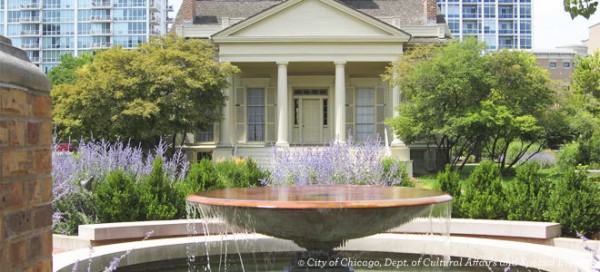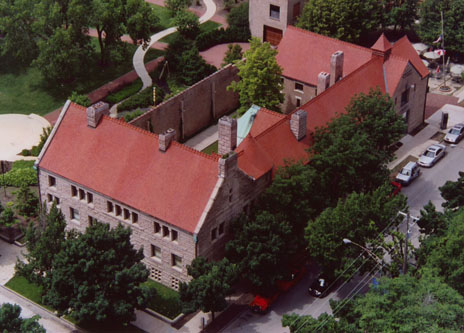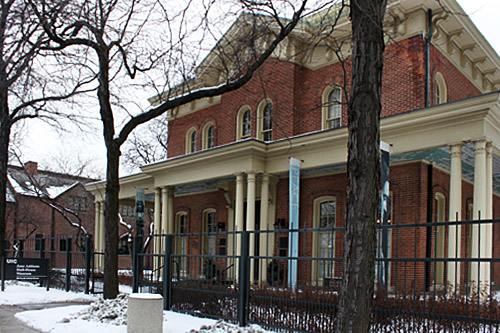 A house with a solid foundation provides a sense of continuity, metaphorically as well as structurally. The legacy of the Prairie School and Arts and Crafts movements in Chicago can be seen on a number of architectural tours, but there are other tours that begin with homes opened to the public and community. The Clarke House, the Glessner house and the Jane Addams Hull-House Museums preserve the past and offer community involvement.
A house with a solid foundation provides a sense of continuity, metaphorically as well as structurally. The legacy of the Prairie School and Arts and Crafts movements in Chicago can be seen on a number of architectural tours, but there are other tours that begin with homes opened to the public and community. The Clarke House, the Glessner house and the Jane Addams Hull-House Museums preserve the past and offer community involvement.
The Clarke House Museum (1827 S Indiana Avenue) is the oldest house in Chicago. The Greek Revival style building (pictured above) was built in 1836 for Henry B. Clarke. It predates the Civil War, bypassed the Great Chicago Fire of 1871, moved twice and now sits in the Chicago Women’s Park and Gardens. Guided tours run Wednesday through Sunday at noon and 2pm.
The Glessner House Museum (1800 S Prairie Avenue) preserves the John J. Glessner House that was completed in 1887. Designed by Henry Hobson Richardson, it incorporates 11th-12th century European Romanesque elements into an American design. The stout design shielded residents from winter wind and neighborhood noise, while a courtyard provided natural light. John Glessner died in 1936. The house passed from the American Institute of Architects to the family to the Armour Institute (to become the Illinois Institute of Technology) to the Lithographic Technical Foundation and began opening for public tours in 1971.
Ongoing events at the Glessner House include Handiwork Circles on the last Thursday of the month, and Friday night camp outs in the Courtyard. Future events will include a Halloween season Poe reading, a lecture on the World’s Columbian Exposition, and Christmas Candlelight Tours. Private events can be booked for the Courtyard, the Coach House, the Dining Room and the Conservatory.
The Glessner House Museum and Clarke House Museum share a Sunday Prairie Avenue neighborhood walking tour. One-hour tours of each museum are offered back-to-back and begin at the Glessner Visitor’s Center inside the front Prairie Avenue entrance.
Nobel Peace Prize winner Jane Addam’s Hull-House (800 S. Halsted) functioned as a settlement house. In 1889, it opened its doors as a means to offer social and educational programs to the working class and immigrants of the area. The “residents” were volunteers who provided classes on art, history, literature and domestic skills. They initiated reform though cooperation and education.
An urban legend sprang up about the Devil-Baby of Hull-House. Apparently, an opinionated father-to-be announced that he would rather have a picture of the Devil in his house than one of the Virgin Mary. His child was born with scaly skin, horns and a tail. Some versions say that it started smoking a cigar and ran away. Others say that it remained locked up in the Hull-House attic. Jane Addams claimed the house was haunted, but denied the existence of the Devil Baby.
Hull-House offers both guided and self-guided tours. Permanent exhibitions include A Day in the Life of neighborhood workers, Childhood at Hull-House, Architectural Encounters that look at how social reform influences decoration and a Meet the Reformers display.



There are no voices yet... Post-script us a message below, won't you?